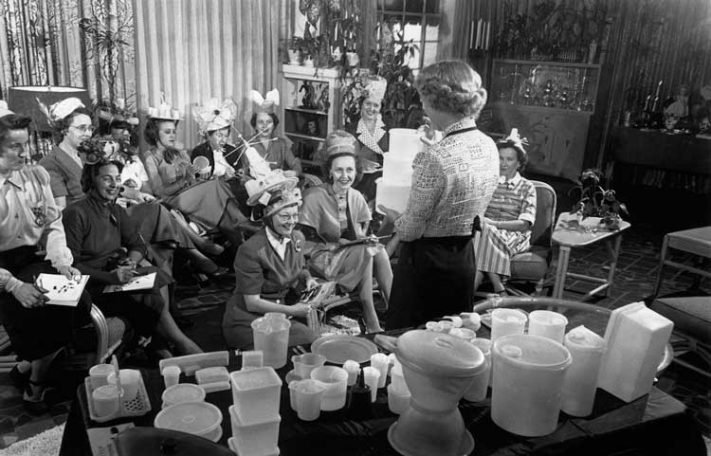Ever wondered how those stacks of plastic containers found their way into the back of your kitchen cupboards?
In a roundabout way, it all traces back to Brownie Wise, a 34-year-old Florida secretary and divorced mother of one who became the queen of Tupperware.

Her idea to hold Tupperware parties as a way to kick-start floundering sales in the 1950s, set the company on a winning trajectory that it’s still on today.
Brownie’s inspiring story is now the subject of a Hollywood film, starring Sandra Bullock, and a new book called Life of the Party.
To celebrate its release, here’s an exclusive extract:
For Brownie Wise, January 29, 1958, began unremarkably; it was just another of the sunny central Florida mornings to which she had long become accustomed. As the day’s heat started to set in, she pulled away from her fashionable lakeside home and navigated her trademark pink convertible on its usual route—Kings Highway, Neptune Road, and finally Orange Blossom Trail—toward the Tupperware headquarters she had helped to build.
Now the head of the company’s Home Party Division, the forty-four-year- old, divorced single mother with an eye for fashion and flair had come up with the definitive method to sell Earl Tupper’s revolutionary product and then guided his company’s explosive growth.
Since Wise had perfected her approach—selling Tupperware through home parties that showcased a feminine, social, soft-sell approach—the world of direct selling had never been the same. From Hilo to Bangor, Battle Creek to Sante Fe, Americans were buying the money-saving pastel products in record numbers. By 1958, Tupperware boasted more than ten thousand dealers and $10 million in annual sales (which would be more than $80 million today).’Build the people,’ Wise preached, “and they’ll build the business.’
Many dealers idolised Wise as a kind of fairy godmother who spoke of wishing, not as whimsy or as psychobabble, but as a road map to success. In return, the dealers held Tupperware parties with sick children or ailing parents in the other room, pushing themselves to their physical limit in hopes of revelling in her presence and praise.
These devoted dealers, in turn, inspired Wise to wake early each morning and grind out new ways to motivate the sales force to push their numbers higher.
Now arriving at Tupperware’s headquarters, Wise pulled into her parking space and prepared herself for another day. Leaving her convertible behind, she walked up to the front doors, and then back to her office, saying bright hellos to staff she met on the way. The chorus of responses she received left no doubt who Brownie Wise was, and who was in charge.
However, beneath her assured countenance lay the stress of a tense standoff she’d been in with her boss, Earl Tupper—one that had put her career at risk. But she would have plenty of time to worry about that later. Right now, she had Tupperware to sell.
*
Earl Tupper, on the other hand, never made grand entrances. Instead, Tupperware’s eccentric Yankee inventor seemed to blow in and out of central Florida like afternoon thunderstorms.
He didn’t care much for the razzle-dazzle of Brownie Wise’s Home Party Division, the company’s sales arm that had helped him rake in millions. The only picture Tupperware photographer Jack McCollum remembered taking of Tupperwas of him sliding in the back door. The cloak-and-dagger stuff, everyone knew, was just his way.
So when the phone rang at the homes of two top Tupperware executives, they had been surprised to hear Tupper was in town. They had no inkling of the bomb their boss was about to drop …

This is an extract from Life of the Party by Bob Kealing, available now at Kmart and all good bookstores through Affirm Press, $24.99